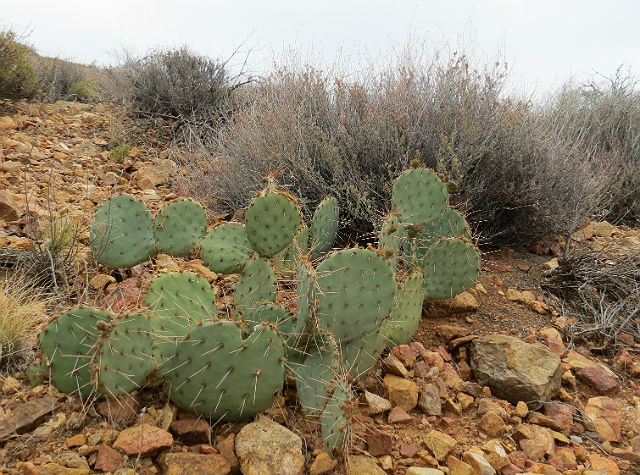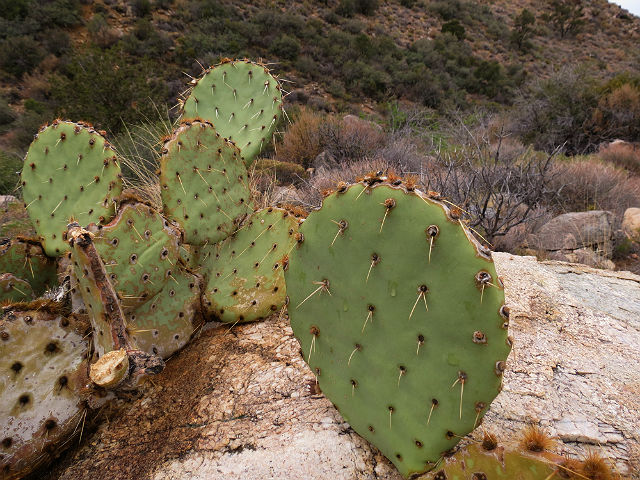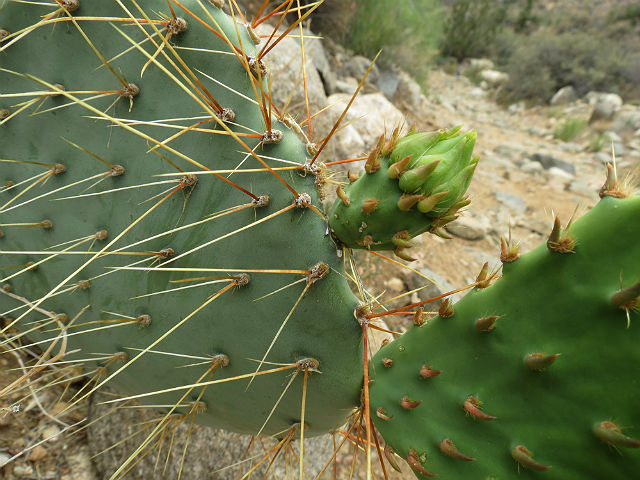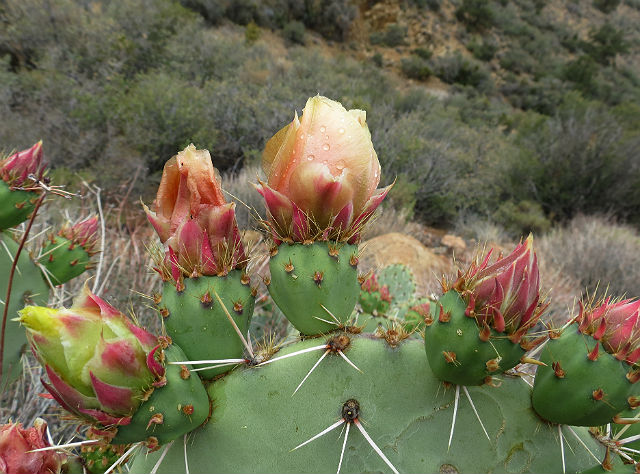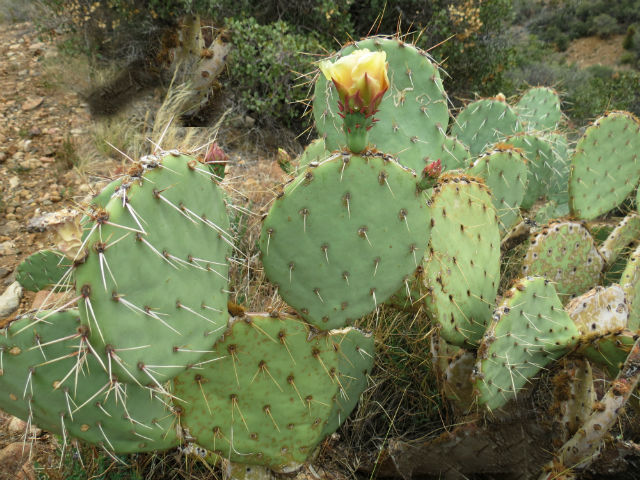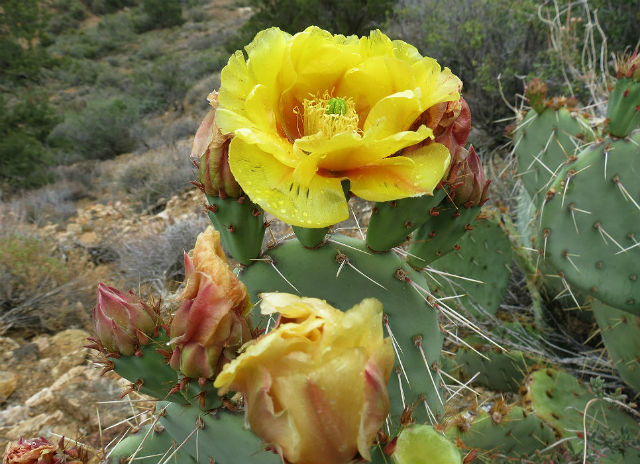This classic North American desert plant consists of about a dozen species. All have flat, fleshy pads that look like large leaves. The pads are actually modified branches or stems that serve several functions — water storage, photosynthesis and flower production.
Most Prickly Pear Cactus have yellow, red or purple flowers – even among the same species. They vary in height from less than a foot to 6 or 7 feet. Like other cactus, most prickly pears have large spines, which are actually modified leaves growing from tubercles (small, wart-like projections).
The fruits of most prickly pears are edible and sold in stores. Prickly Pear Cactus branches (the pads) can be cooked and eaten as a vegetable.
Prickly Pear Cactus are found in all of the deserts of the American Southwest, with different species having adapted to different localities and elevation ranges.
There has been medical interest in the Prickly Pear plant. Some studies have shown that the pectin contained in the Prickly Pear pulp lowers levels of “bad” cholesterol while leaving “good” cholesterol levels unchanged.
I enjoy seeing the different forms of this “classic” desert plant whenever I visit the Mojave Desert. And with its many uses to man, who knows what other secrets this arid-dwelling succulent may reveal?

